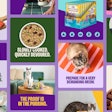The U.S. pet industry--long famous for recession-resistant growth and often (though not recently) a darling of Wall Street–posted its most significant growth ever in 2021.
Moreover, as reported in Packaged Facts' just-released U.S. Pet Market Focus: Pet Stores & Pet Specialty Retailing, sales of pet specialty retailers and e-tailers topped $31 billion, with a 18% growth rate surpassing that of the pet and vet industry overall.
It's not all smooth sailing, of course. Inflation remains a primary concern across consumer goods markets, with a range of factors combining into the perfect storm of economic pressures. "Manufacturers across the pet market have slowly increased their prices," according to report analyst Shannon Brown, "spurred by challenges in acquiring ingredients, packaging materials, and a host of other items that go into making and selling pet products."
Fueling inflation are supply chain issues that began with the 2020 COVID-19 shutdowns, though have since been compounded by surging consumer spending, additional shipping delays, overcrowded warehouses, and shortages of both shipping containers and long-haul truck drivers.
Pet product marketers must contend with demand for ingredients that are increasingly difficult to acquire. At times, store shelves remain unfilled and force pet owners to pay more for or to purchase different products or brands than they typically would, a challenge that can disproportionately affect key pet product growth areas such as "fresh" (refrigerated/frozen) pet food.
U.S. pet owners and pet product shoppers are well aware of the shifting landscape, as comparing Packaged Facts' 2021 Survey of Pet Owners with this year's iteration shows. For example, 59% report spending more on pet products than they used to, up from 45% in 2021, and 45% are spending more on pet products and attributing it directly to COVID-19, up from 34% in 2021.
Even so, pet specialty retailers and e-tailers maintain a strong hand. The pet specialty market saw a flurry of activity between 2020 and 2022, with Chewy approaching $10 billion in annual sales, PetSmart's $2.4 billion bond deal, and Petco's IPO. And there are several high-performing franchises among brick-and-mortar pet specialty retailers, including the recently acquired Pet Supplies Plus and Woof Gang Bakery chains.
In-store services have become critical to pet specialty retailers' success in competing with Amazon and mass-market brick-and-mortar stores (though Walmart is also flying the pet services flag). Grooming and boarding services feature prominently among pet specialty retailer marketing messages, as do veterinary care and the new dog training particularly important to Millennials.
Moreover, store brand products have long been a strength of the pet store channel, with the key pet specialty retailers expanding their private label offerings in the past few years. As recessionary conditions put pricing pressure on all pet categories, store-brand products are well-positioned to leverage their status as premium and on-trend yet affordable options, especially in the kingpin pet food category.












